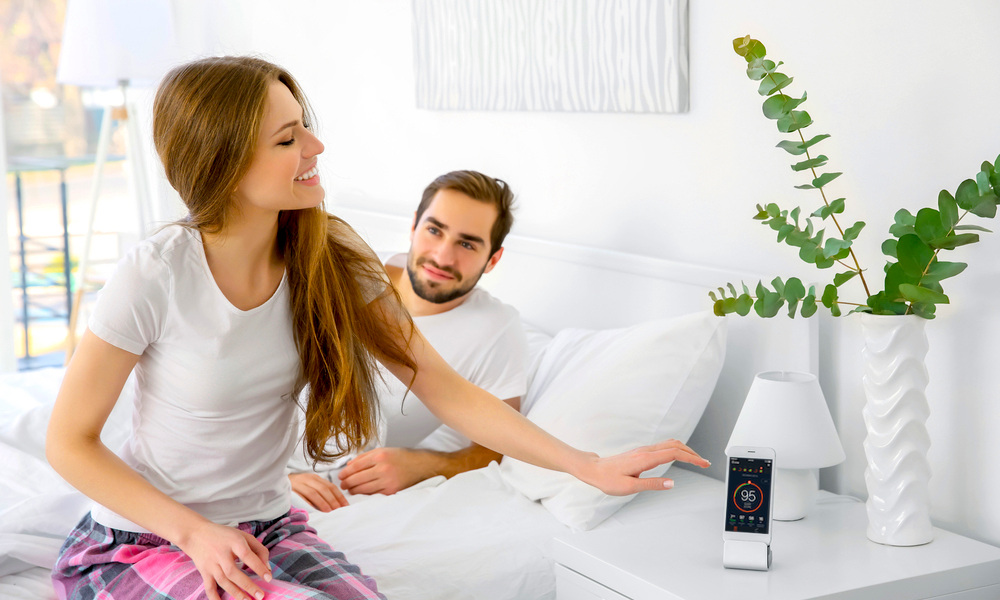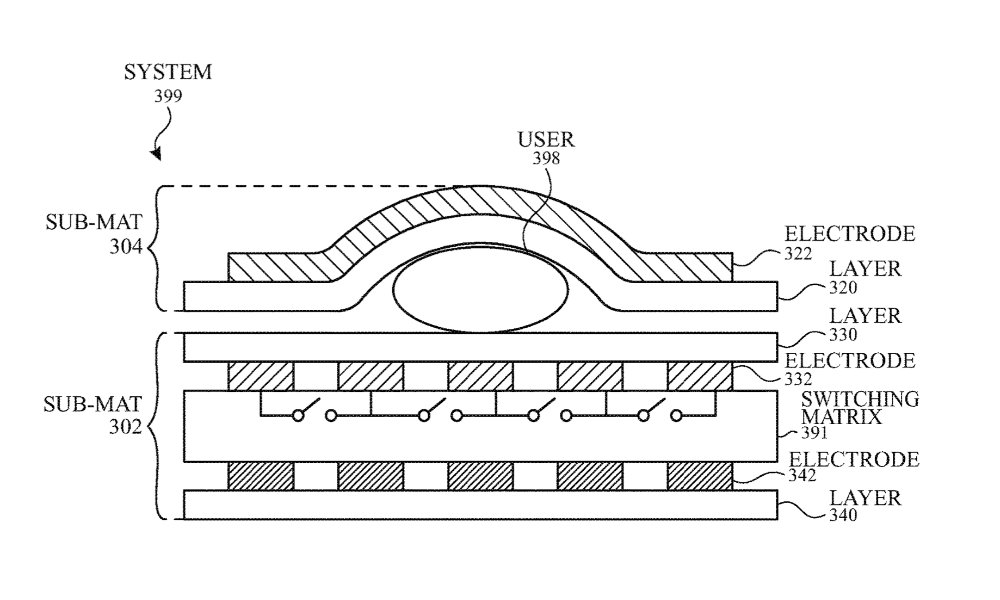Could Apple’s Next Big Innovation Be a Smart Mattress?
 Credit: Africa Studio / Shutterstock
Credit: Africa Studio / Shutterstock
Toggle Dark Mode
One of the many slightly under-the-radar projects that Apple has been working on for the past few years clearly has something to do with sleep tracking, and now a new patent application reveals that the company may have even broader ambitions for improving the quality of your time in bed.
Three years ago, Apple acquired Beddit, a firm that specialized in creating sleep monitoring hardware for iOS users, which was best known for its flagship product, the Beddit 3 Sleep Monitor. At the time, it seemed like Apple was interested in using Beddit’s technology to enhance the health and fitness features in the Apple Watch, however not only has the Beddit 3 remained on sale, but recent reports suggest that Apple has been working on a direct update to the existing sleep monitoring hardware.
Of course, that doesn’t mean that Apple isn’t also using the engineering talent and intellectual property that came from Beddit in other areas. After all we don’t have to look any further than Apple’s Beats headphones division to see how Apple can acquire a company for other purposes while still continuing to market and expand upon its original product line.
In fact, a little over a year ago, rumours began to surface that Apple was planning to add Sleep Tracking to the Apple Watch, with an original timeline suggesting 2020 — which would seem to put things on track with more recent reports about what’s coming to the Apple Watch Series 6, along with the leak of a new Sleep app last fall, shortly after watchOS 6 had already debuted.
Bigger Things
However, it looks like Apple may have much bigger plans than simply allowing the Apple Watch to track your sleep. A new patent application discovered by AppleInsider suggests that the company is at least considering extending its sleep tracking technology to blankets and mattresses.
This is almost certainly based on the technology from Apple’s acquisition of Beddit, which already features a hardware strip that hides under your sheets with sensors for force, humidity, temperature, and more, but according to U.S. Patent No 20200107785, it looks like Apple may be looking to take that technology much further.
The patent application, which is titled “Vital Signs Monitoring System,” makes the valid point that sleep tracking done by a wearable device like the Apple Watch is limited by its very nature. An Apple Watch can only monitor a single person, and it has to actually be worn to bed in order to be useful for this purpose, which also raises the challenge of finding another time to actually recharge it.
The text in the application also notes that the equipment worn to accomplish sleep tracking can often affect the very sleep patterns that it’s trying to monitor. While this refers to “expensive and bulky equipment” often found in medical facilities, even wearing an Apple Watch might have an impact for users who have otherwise never worn a watch to bed.
The ability to only monitor a single user also has another limitation that the application highlights, which is the fact that there’s no way of combining the analysis of both users in order to know if that’s affecting the sleep of the user who is being monitored. In other words, if you’re wearing your Apple Watch to bed beside someone like a spouse, partner, or child, your watch sensors would have no way of knowing if you’re getting a bad sleep simply because they’re tossing and turning all night.
While Apple’s proposed solution may seem similar on the surface to what the Beddit product already offers, the patent application shows a much more comprehensive design that would expand Beddit’s small strip of material that gets placed under your sheets to actually turning a larger portion of the bed into a sensor — possibly the entire surface of a mattress.
“The monitoring system can include a plurality of sensors including, but not limited to, electrodes, piezoelectric sensors, temperature sensors, and accelerometers, Based on the measured values, the monitoring system can analyze the user’s sleep, provide feedback and suggestions to the user, and/or can adjust or control the environmental conditions to improve the user’s sleep.”
It’s not just about the mattress either, as the diagrams and descriptions in the patent application clearly show how a blanket placed on top of a person could also include electrodes and sensors so that vital signs affecting sleep patterns could be measured from both sides.
Not Just Monitoring
According to the patent application, Apple has even more in mind for this than just monitoring vital signs and quality of sleep. The text suggests that it would be able to adjust environmental conditions, which could include interacting with a thermostat or air conditioner via HomeKit to keep the room at an ideal temperature for sleep, based on the user’s own body temperature readings, or even directly altering temperature itself through “active heating or cooling” — basically turning it into a very sophisticated electric blanket that could even adapt to more than one person.
The patent application also describes a touch panel that would provide a control interface as well as data on “heart rate, heart rate variability, respiratory rate, respiratory rate variability, user’s motion, and user’s temperature.” Rather than a standalone panels however, this could also simply be referring to an app running on an iPhone or iPad.
While all of this seems like a very cool idea, the usual caveats apply here when talking about stuff that Apple patents — the U.S. Patent Office is full of Apple’s patent applications and granted patents that have never resulted in any actual products whatsoever, so there’s no guarantee that a product like this will ever see the light of day, nor even that it’s technologically feasible (yet). However, this does give us a good idea of the sort of things that Apple engineers are thinking about, and the one thing that’s definitely clear from this patent is that even if we never see a smart mattress or blanket quite this sophisticated, Apple’s ambitions for sleep tracking are much more extensive than we first suspected.
[The information provided in this article has NOT been confirmed by Apple and may be speculation. Provided details may not be factual. Take all rumors, tech or otherwise, with a grain of salt.]







